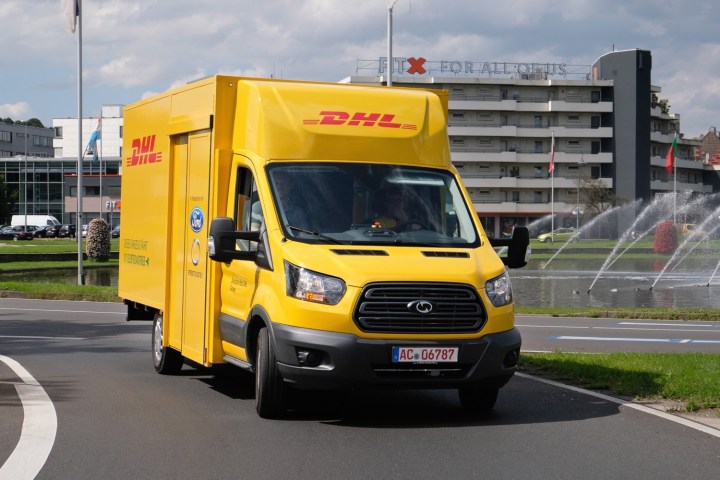
Ford already has ambitious electric car plans, and the carmaker also thinks electric vans are a good idea. It teamed up with Deutsche Post DHL Group to build a fleet of electric vans for mail delivery in Germany. Deutsche Post, the Germany postal service, was already interested in electric vehicles before Ford came along, buying the rights to StreetScooter electric vans and arranging to put them into production itself. But Ford’s participation could accelerate Deutsche Post’s electrification plans.
The new electric van, dubbed the StreetScooter Work XL, uses a Ford Transit chassis with an electric powertrain and a body designed by Deutsche Post. It’s a bit bigger than StreetScooter’s existing Work and Work L vans, which explains the “XL” designation. Ford says it can hold up to 200 parcels at a time.
The Work XL features a modular battery system, allowing battery packs from 30 to 90 kilowatt-hours. Ford says that should allow a range of 80 to 200 kilometers (49 miles to 124 miles), with charging taking about three hours. Because delivery vans operate on predictable routes relatively close to a central terminal or garage, range anxiety will probably be less of an issue than with electric passenger cars.
Ford and Deutsche Post plan to put 150 preproduction vans into service by the end of this year. By the end of 2018, they want to have 2,500 vans on German roads. That will save 4.75 million liters (1.25 million gallons) of fuel per year, as well as thousands of tons of carbon-dioxide emissions. While the vans will be used exclusively by Deutsche Post at first, the German outfit and Ford are open to selling them to other parties.
Electric commercial vehicles are getting more attention from both established automakers and startups. A new startup called Chanje wants to deliver its first electric vans before the end of this year. Nissan and Renault already sell smaller electric vans in Europe and other markets. Daimler and Tesla are both looking at bigger commercial trucks, with Tesla promising to unveil an electric semi-truck next month.




